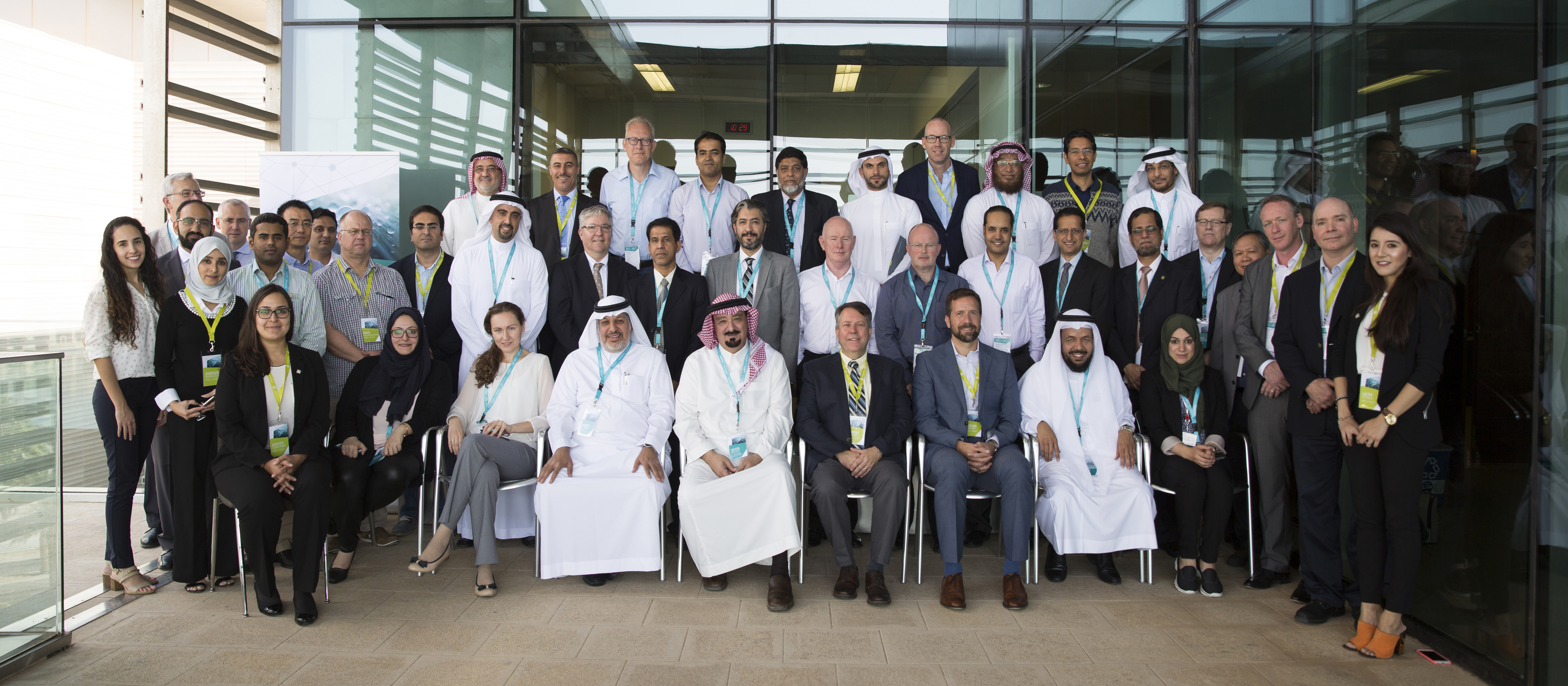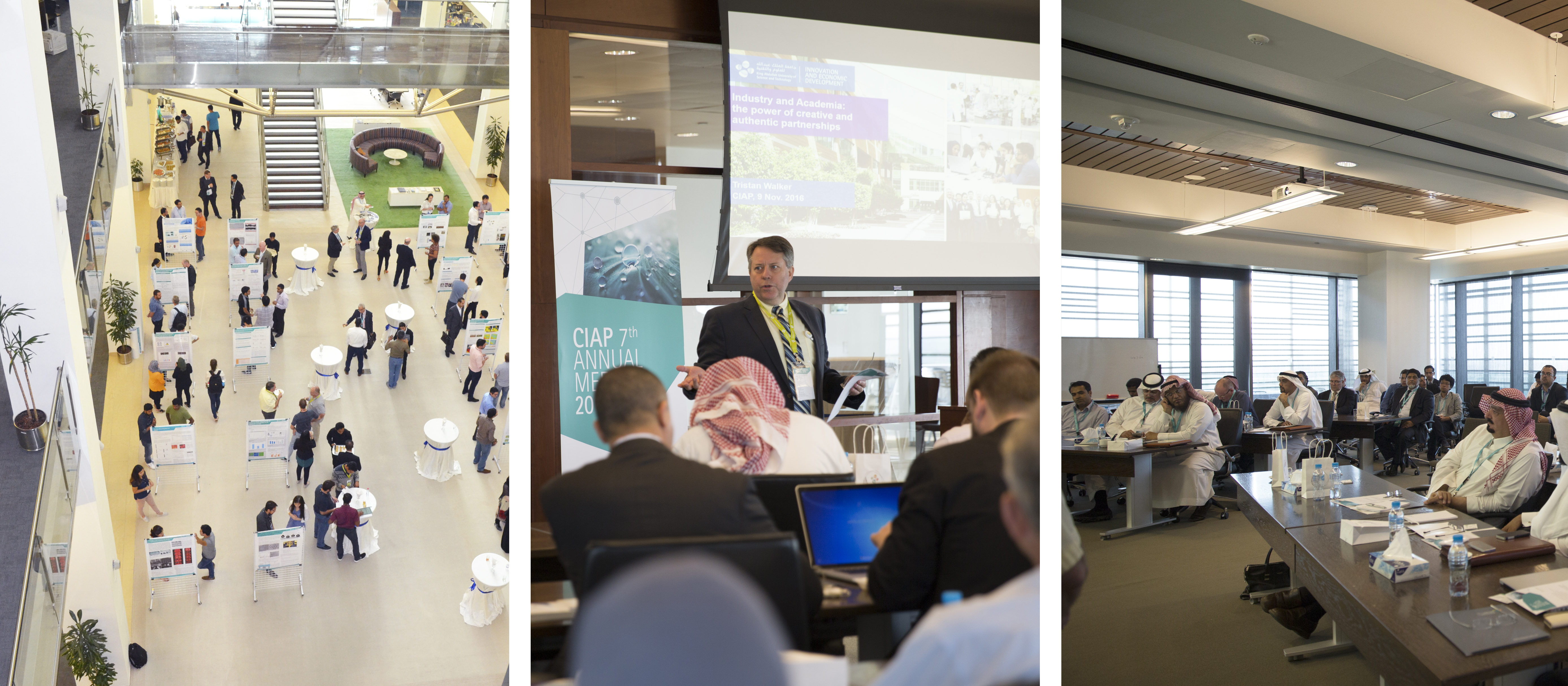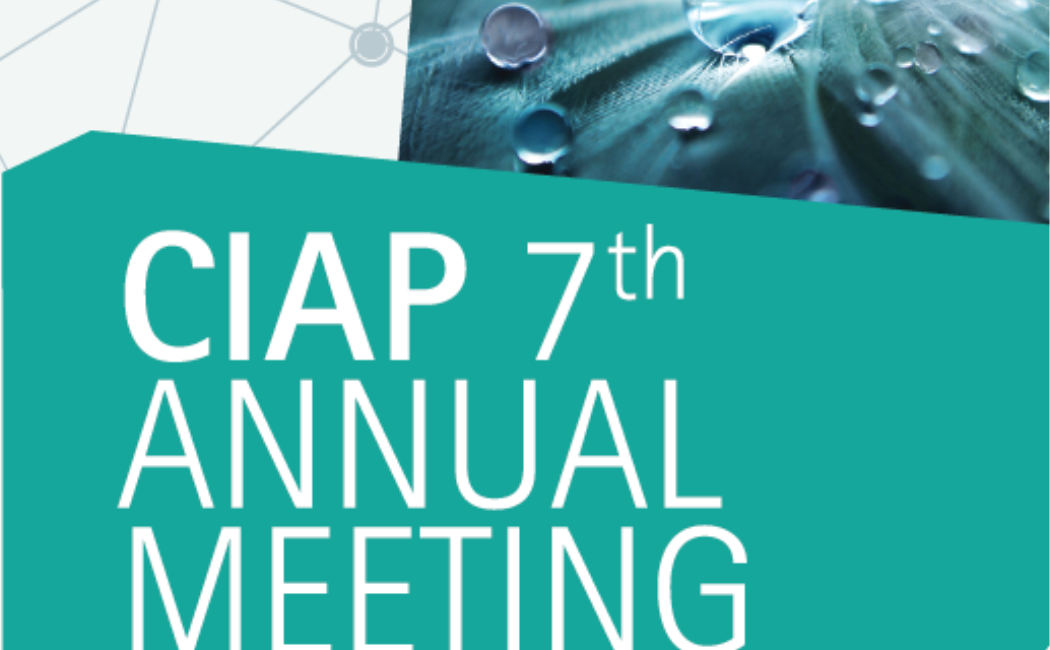

The Water Desalination and Reuse Center hosted its 7th Annual Center Industry Affiliated Program (CIAP) Meeting on November 9-10, 2016. A total of 33 delegates representing 17 companies, government and intergovernmental agencies, and the Islamic Development Bank attended the meeting. The objective of the meeting was to inform and update participants on WDRC research at laboratory and pilot-scale, and strengthen collaboration with existing and new members, ultimately ensuring the relevance of WDRC activities to the industry at local and global level.
Mr. Walker, Deputy VP of I&ED opened the meeting with a talk on the “Power of Creative and Authentic Partnerships between Industry and Academia”, providing an overview of engagement opportunities for industries to partner with KAUST. The Deputy VP of I&ED highlighted the current impact of KAUST in terms of talent development, creating high value jobs, establishing new businesses, attracting knowledge-based industries, and translating new technologies. This was followed by an open discussion on the “Water Landscape in Saudi Arabia”. Participants were encouraged to discuss the issues of water supply and sanitation in the Kingdom with Dr. Al-Arifi and Dr. Al-Taisan from SWCC, and Dr. Alqadi from NWC. The government representatives indicated that management of water and wastewater services, both at SWCC and NWC, are trending away from EPC type contracts and towards privatization, through e.g., public-private partnerships. Dr. Alqadi informed the participants that wastewater coverage is planned to increase from current 40% to 85% mainly in urban areas. The proposed expansion will be developed and managed through public-private partnerships, opening the opportunity for collaboration in several areas, including demand management, leakage control, utilization of alternative natural resources such as solar and geothermal energy, utilization of sludge, and production of bioenergy. Dr. Alqadi also mentioned that the current lack of legislation and infrastructure limits optimum water reuse strategies.
For more pictures of the event click here.

Day 1 continued with WDRC updates by Prof. Leiknes and CIAP updates by Dr. Tabatabai. Research highlights from the different themes were presented by WDRC faculty. Prof. Ghaffour discussed results from integrated forward osmosis-membrane distillation (FO-MD) systems for water treatment applications. Prof. Ng presented the latest findings on hybrid multi effect distillation-adsorption cycles for sustainable low carbon desalination. Faculty presentations continued with Prof. Vrouwenvelder discussing the impact of biocides on biofouling and the importance of early warning systems in biofouling prevention and control. Prof. Leiknes discussed the use of advanced imaging techniques for understanding and controlling biofouling membrane bioreactors for wastewater reclamation and reuse. Associate Prof. Saikaly presented the latest findings of his research team in sustainable biotechnologies for wastewater treatment and resource recovery. Assistant Prof. Hong discussed microbial safety aspects of water reuse. Associate Prof. Wang presented research findings on photo-thermal materials for water evaporation and thermal energy storage. Assistant Prof. Mishra discussed material modification techniques for creating hydrophobic surfaces from hydrophilic materials. The session was concluded with a presentation by Associate Prof. McCabe on monitoring water use and crop health in agricultural systems. The presentations were followed by a poster and networking session, during which 46 WDRC research scientists, postdoctoral fellows and Ph.D. students presented their work.
Day 2 was focused towards WDRC industry partners with keynote presentations from Schlumberger, Al Watania, and RPD Innovations. The session offered participants a unique opportunity to learn about water management experiences, challenges and collaboration opportunities from the oil and gas sector, agriculture sector, and manufacturing and technology scale-up. Mr. Moin Muhammad, VP Integrated Production Services (Water Management and EOR) Schlumberger, presented an overview of water in the oil and gas industry. His talk focused on the required quantity and quality of water for various applications in the oil and gas sector, discharge requirements, technical challenges and innovations in the sector. Dr. Yahya Yousef, Animal Production Act Manager and Research Advisor Al Watania, presented an overview of the water use and associated challenges in organic agriculture in Saudi Arabia. Mr. Ahmed Al-Shadookhi, CEO RPD Innovations talked about the importance of transforming innovation into impact and the role of RPD Innovations in technology scale-up in the Kingdom.
The keynote presentations were followed by an open discussion, involving all participants, on optimum utilization of WDRC pilot facilities with multiple industry and faculty engagement. The discussion focused on how to effectively combine resources, ideas and efforts in utilizing the piloting facilities for conducting research that is of benefit to all CIAP members. WDRC currently operates one seawater and one wastewater pilot facility for testing novel desalination and wastewater reuse technology, respectively. The afternoon of day 2 was dedicated to industry-faculty meetings and visits of Core Labs and WDRC laboratories.
WDRC looks forward to continued collaboration with our industry partners and to welcoming our members at the 8th Annual CIAP Meeting in 2017.






